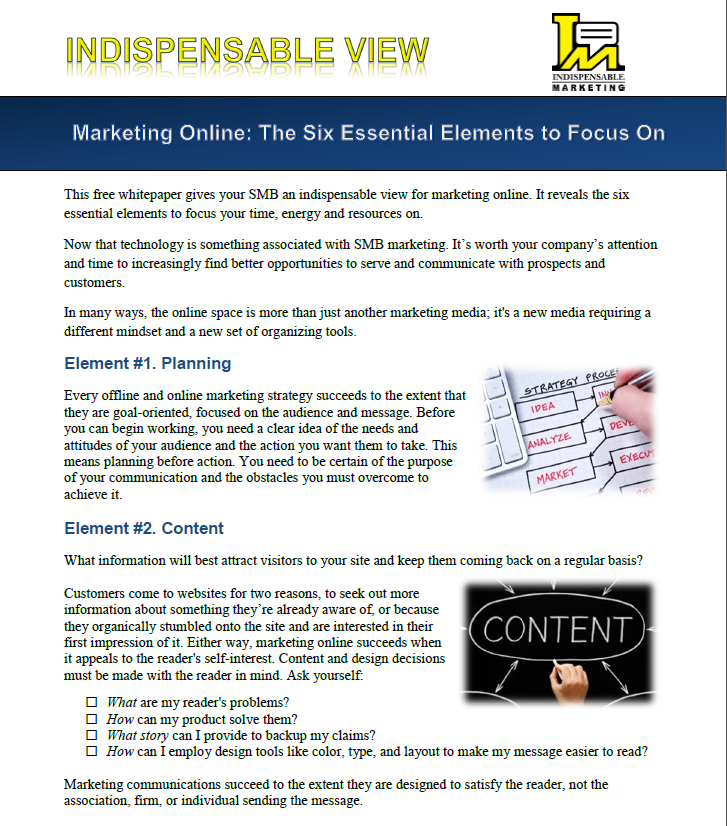Marketing Online: The Six Essential Elements to Focus On
So. You think you’ve got yourself a good online marketing program.
You have a website ready to be published. You knocked out the dreaded about page. You even chose to start a Facebook page.
Now it’s time to get focused on that puppy — intensely . So that it has a fighting chance in the trenches.
You’ll want to pay attention to the details like avoiding silly, but common, marketing mistakes. You’ll want to set business objectives and choose your content topics carefully so they’re interesting to your readers.
This will allow you to shed excess procrastination so that you have effective, purposeful and profitable marketing online.
But you’re not done. You also must ensure that your online marketing has all of the essential elements it needs.
Elements like these, as presented in this special report. Print it, pin it, but whatever you do … use it.
Want to download this special report for free?
Special Report – Marketing Online: The Six Essential Elements to Focus On. [ click here to download ] suitable for printing and going over with your website designer, when you need to see it most.
This checklist of essential elements to focus on will make your life simple because marketing online on a regular basis is hard work.
With each online marketing decision you look at this list and say “Did I have a clear objective? Did I create relevant and valuable content?” And so on.
The last thing you need is to wonder whether your online marketing has everything it needs to be successful. Now you can evaluate your online marketing at a glance and be sure it has every element it needs to deliver the results you need.
About the Author: Patrick McFadden is the marketing consultant to call when you want SALES … not just words.. He is also an advisor and featured marketing contributor to American Express Open Forum and has been named a marketing thought leader for small businesses.





